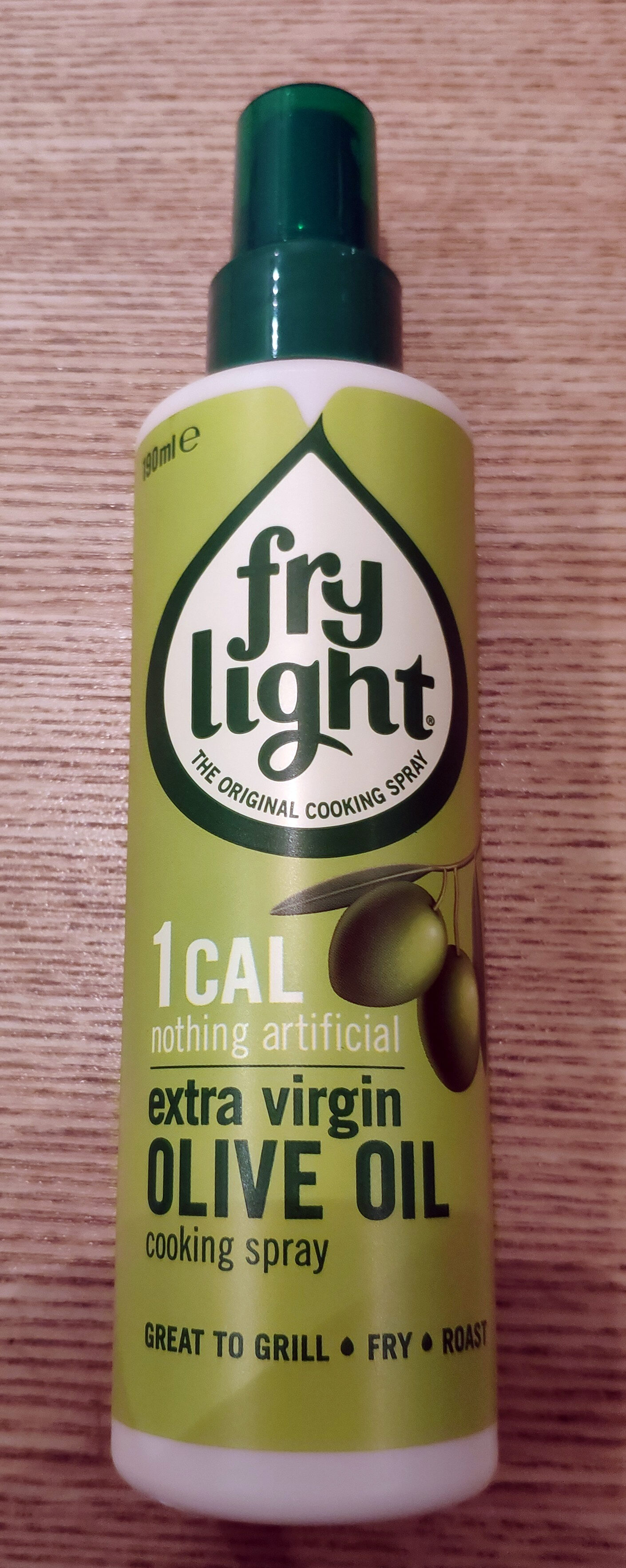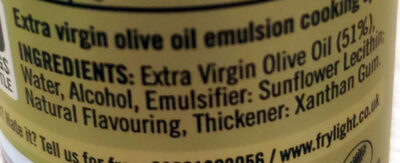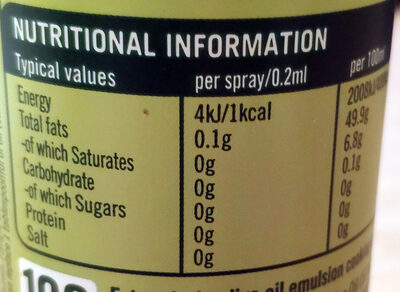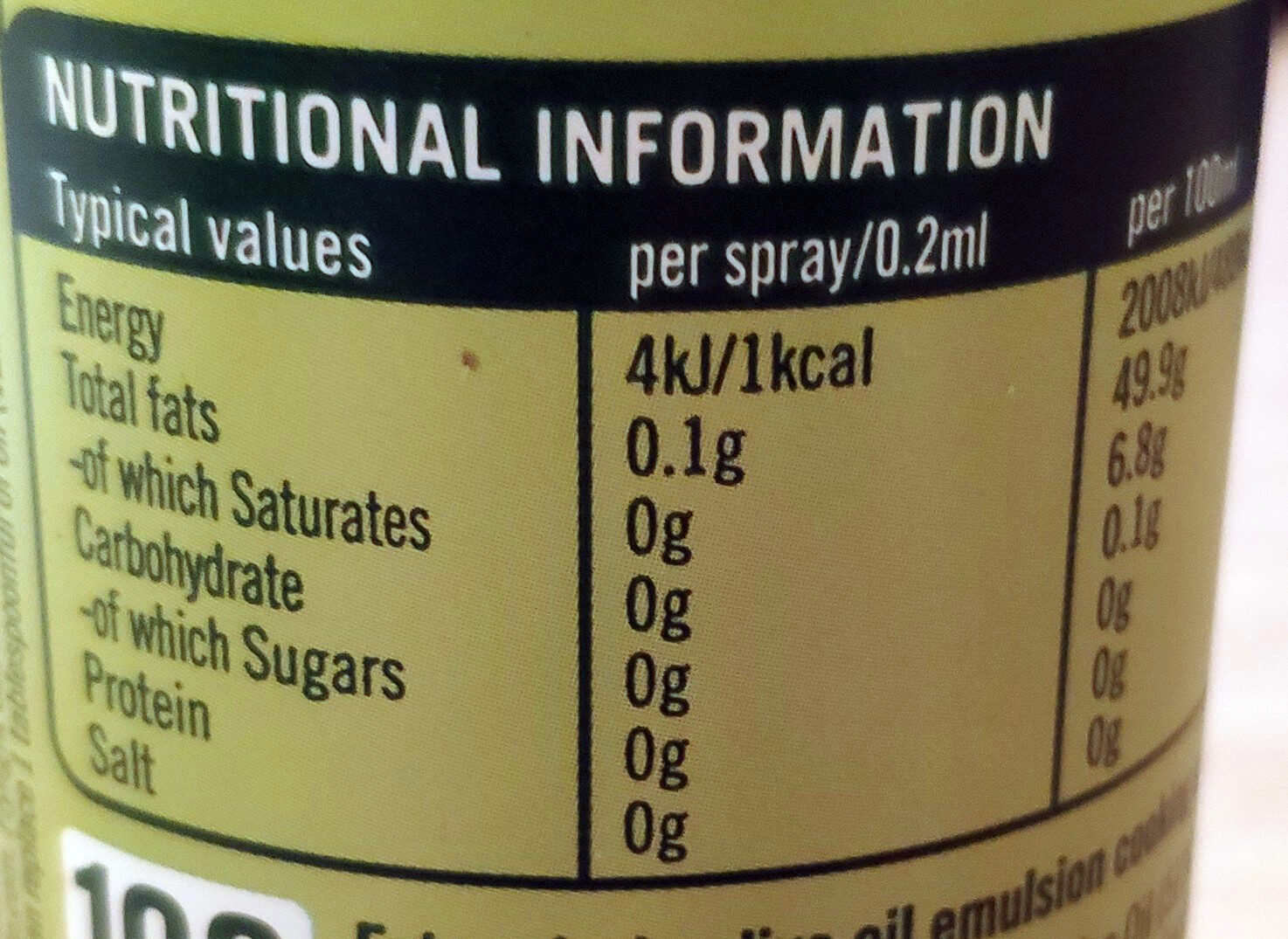Olive oil - Fry light - 190 ml
This product page is not complete. You can help to complete it by editing it and adding more data from the photos we have, or by taking more photos using the app for Android or iPhone/iPad. Thank you!
×
Barcode: 5000442007594 (EAN / EAN-13)
Common name: Extra virgin olive oil emulsion cooking spray
Quantity: 190 ml
Packaging: Plastic, Bottle, Pump bottle, Hdpe-bottle
Brands: Fry light
Categories: Plant-based foods and beverages, Plant-based foods, Fats, Vegetable fats, Olive tree products, Vegetable oils
Labels, certifications, awards:
No gluten, Vegetarian, Vegan, The Vegan Society, Vegetarian Society
Manufacturing or processing places: United Kingdom
Link to the product page on the official site of the producer: http://www.frylight.co.uk/our-range/extr...
Stores: Sainsbury's, Morrisons, Asda, Tesco
Countries where sold: France, United Kingdom
Matching with your preferences
Environment
Packaging
Transportation
Report a problem
Data sources
Product added on by date-limite-app
Last edit of product page on by eddyag.
Product page also edited by alia, beniben, charlesnepote, doublah, ecoscore-impact-estimator, foodless, inf, kandy971, kiliweb, makuikui, openfoodfacts-contributors, packbot, redjayy, swipe-studio, thatdanski, waistline-app.










